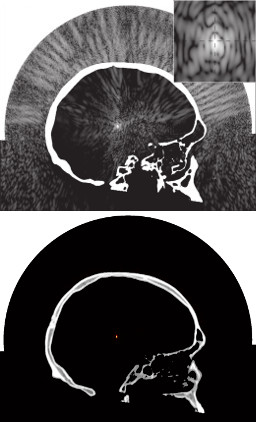Focused ultrasound therapy
When ultrasound is focused in a small volume of tissue, absorption of acoustical energy results in localized heating and elevation of temperature, which can be utilized to achieve therapeutic effects. The approach is often referred to as high-intensity focused ultrasound (HIFU), or focused ultrasound (FUS). In addition to thermal mechanisms, bioeffects can also be achieved in mechanical manner e.g. by using ultrasound in combination with cavitating ultrasound bubbles.
In a typical treatment setting, a phased array, composed of multiple ultrasonic transducers, is driven such that the ultrasound waves emitted from the device form a millimeter scale focus in a prescribed position in a patient. Since the ultrasound is delivered from outside the patient through an intact skin into the target, the technique has been referred to as bloodless surgery. During the ultrasound treatment sonications, the patient is monitored using e.g. magnetic resonance imaging (MRI) based thermometry, and ultrasound imaging based cavitation monitoring or mapping.
Some of the applications of focused ultrasound therapy under research or clinical use include:
- Transcranial focused ultrasound for functional neurosurgery
- Transient blood-brain barrier opening and targeted drug delivery
- Neuromodulation or neurostimulation
Main lines of research in ultrasound therapy in the group are:
- Development of tools for treatment planning
- Optimization of the treatment delivery
- Methodology research on ultrasound
Contact
Past and present collaborators
- Professor Meaghan O’Reilly, Sunnybrook Research Institute, Canada
- Professor Kullervo Hynynen, Sunnybrook Research Institute, Canada
